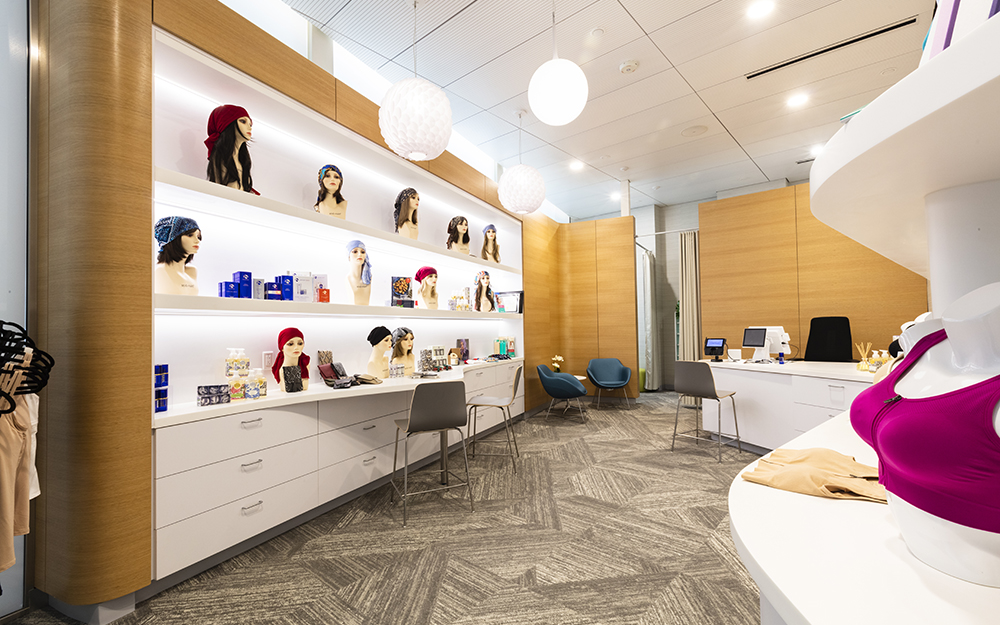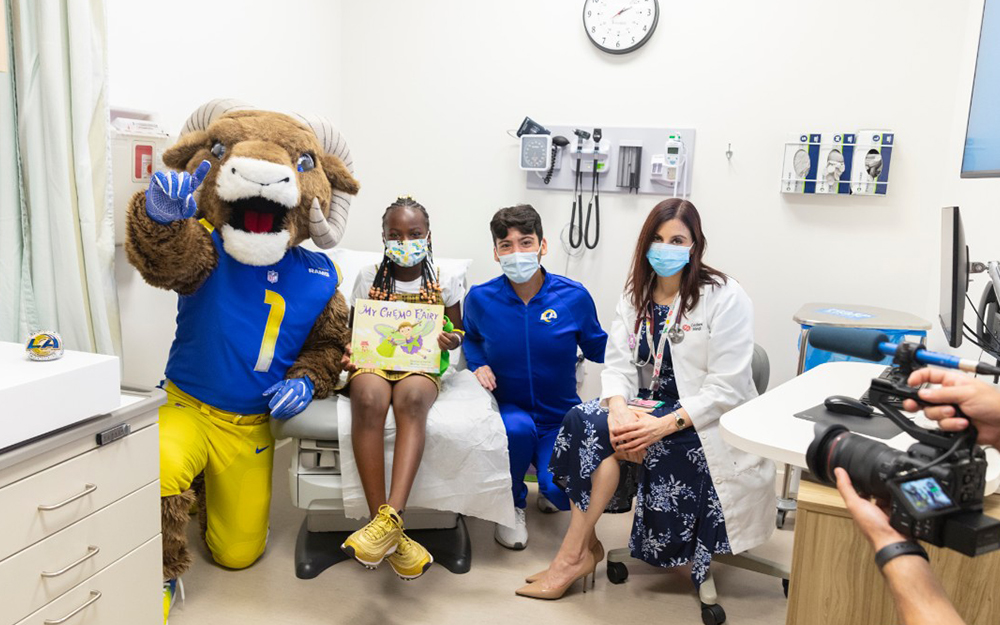Practical Advice for Breast Cancer Patients
Date
October 19, 2022

Date
October 19, 2022
Credits
Medical providers featured in this article
In Brief
{{cta-block}}
Breast cancer treatment can stretch over the course of a year, from diagnosis to surgery to treatments such as chemotherapy and radiation. Many of the needs that crop up during treatment are unanticipated and affect more than the patient’s physical health.
Linda Hirsh, manager of the Boutique at the Cedars-Sinai Breast Health Services building, acts as a guide for patients who need to address the complicated and sometimes painful emotions that arise during breast cancer treatment.
She offers fittings, informed opinions on what products work best for different needs and wisdom gleaned over three decades of helping women with breast cancer.
“I’ve seen so much, and so much has improved for breast cancer patients,” she says. “The treatments are better, and the products available to support patients have improved. Here, we listen to what they need and what they’re worried about and point them in the right direction.”
Linda offers some practical tips for patients to consider as they work through their breast cancer treatment.
"So much has improved for breast cancer patients. The treatments are better, and the products available to support patients have improved. At the Boutique, we listen to what they need and what they’re worried about and point them in the right direction."
Find the right fit
Many women have their go-to “bra lady,” someone who can expertly fit them into a garment that is comfortable and supportive. Women who have had full or partial mastectomies have similar needs.
Finding a bra that will comfortably fit their changed bodies and pairing it with the proper prosthetic is a bit of an art—and that’s where Linda comes in.
"This is where I’m an expert," she says. "Sometimes, I don’t even have to get out the tape measure."
Sourcing the bra is often the trickiest part of the process, and she’s delighted that more companies are offering garments that are functional and pretty—and available in a range of styles and colors beyond a clinical beige or nude shade.
Prostheses also come in a range of options. Her favorite is one that can be pumped full of air for a customized fit. It’s lighter than its silicone counterparts, so it’s cooler to wear—though some patients prefer the weight of the more traditional silicone prostheses.
It’s OK to want to look good and feel better
For some patients, losing their hair is a difficult and painful part of treatment. Seeing your appearance change is emotional, Linda says.
“We want to empower people to know their feelings and needs are valid,” she says. “When you feel good about how you look, you feel better psychologically. It’s all tied together and part of your wellness.”
Hats, scarves and headwraps are all good options for women who choose to cover their head if they lose their hair. The Boutique also offers wigs or partial hairpieces that can be cooler and more comfortable to wear. The shop’s team can help with makeup and skin care routines, too, Linda says.
Don’t hesitate to address sexual wellness
It’s healthy and normal to want to connect intimately with a partner—and the effects of illness and chemotherapy can make that difficult.
"Sexual wellness has been coming to the forefront," Linda says. "There’s a need for this and a need to be able to talk about it without feeling embarrassed."
Pelvic floor weakness is a common problem that can contribute to incontinence issues and painful sex but can be addressed with Kegel exercises to help strengthen those muscles. The Boutique carries other helpful items, including dilators, personal lubricants and vibrating massagers.
"Sexual issues are very real, and nobody talks about it," Linda says. "We shouldn’t be afraid to talk about it and help with these problems."
Keep looking for the right fit
The need for the right fit extends to more than support garments and prosthetics.
Compression sleeves are another important accessory for women who have had a significant number of lymph nodes removed in surgery. A properly fitted one worn at the right times can help prevent lymphedema, which is tissue swelling caused by a buildup of the fluids that are usually drained through the lymphatic system. The swelling can become chronic, but a compression sleeve can help push the fluid out of the arm and prevent swelling.
The right fit isn’t just for the things you wear, Linda says. It goes for your team, too. Make sure you have doctors and healthcare providers you trust and who listen. After more than 30 years of helping breast cancer patients, it’s still her No. 1 piece of advice.
"It’s your body and your health," she says. “Don’t be afraid to speak up."






